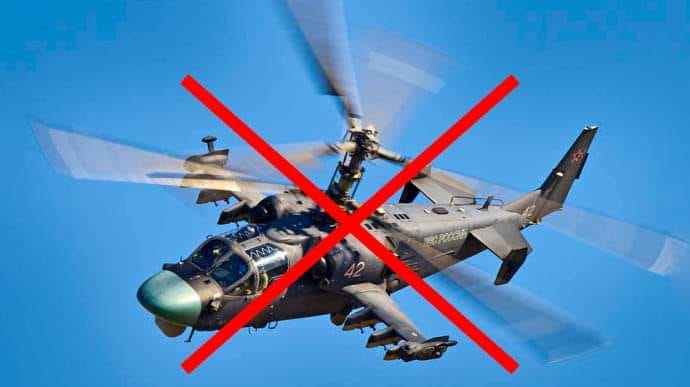It is becoming increasingly apparent that Ukraine's main thrust is in what is being called 'the Central Front,' the area between Kherson in the west and Bakhmut in the east.
The challenge is that this is the area Russia determined months ago would be the primary focus of the counteroffensive and thus became the most heavily entrenched and defended. Despite that, the Ukrainians are having some success, but have adapted - as they have repeatedly shown they can do - to overcome the obstacle. JL
Phillips O'Brien reports in his substack:
The Ukrainians have moved to a tactic of engage and destroy. Make small advances (though much quicker than the Russians made around Bakhmut), bring Russian forces out to stop them, and use this opportunity to destroy the Russians. They will have to do this until Russian forces are so weak that a more significant advance can occur. Its good that Russia is throwing its most advanced systems into the fight (such as helicopters because) without control of the air and unable to make fast advances because of the vulnerability of its own forces, the Ukrainians are going to have to chew through a great deal of Russian equipment and soldiery. The more they can destroy of the best Russian strength now, the better chances for a successful counteroffensive down the road.The Central front might best be termed the area of the front which stretches east from where the Dnipro really widens out to approximately the city of Donetsk. Ive marked approximately where the Central Front would be with two wide, black lines on the Deep State map below.
Its been the area of the most consistent Ukrainian offensive action of the last 10 days—and that makes sense in a strategic way. If the Ukrainians can press forward here they can split Russian forces in Ukraine into two non-supporting forces and make Russian forces in the west (Kherson Oblast) particularly vulnerable.
Counteroffensive--KA-52s and prepare for more destruction
The problem, as Ive probably banged on about too much, is that the Russians have, for this precise reason made this what looks like the most well defended part of their line, and this reality has meant that the Ukrainians will have to inflict a great deal of destruction on Russian forces before they can move forward. What seems to have happened is that at the start of this phase of the counteroffensive the Ukrainians started testing the strength of Russian lines by pushing forward some of their prepared armored forces. It quickly became clear because of the range of options the defending Russians possessed (mines, airpower, handhelds, artillery, etc) that this was not a tactic that would gain victory quickly.
Since then the Ukrainians have more to a tactic of engage and destroy. Make small advances (though much quicker for instance than the Russians make around Bakhmut), bring Russian forces out to stop them or even counterattack, and use this opportunity to destroy the Russians. They will have to do this for a while, until Russian forces are so weak that a more significant advance can occur.
In that way it is a good thing that the Russians are now committing some of their best remaining systems, such as the KA-52 helicopter, to this fight. If you want to read a little more about the KA-52 you can take a look at this.
https://www.airforce-technology.com/projects/ka52-alligator-attack-helicopter-russia/
These are some of the most powerful weapons in Russia’s arsenal though, like all helicopters they are also very vulnerable to anti-air fire. In this case Russia also possesses only a relatively small number of them (just over 100 it seems, though its very hard to get definite figures).
Now when they appeared, some in the press (as always) dramatically overreacted and stories started appearing about how much damage they had and would inflict.
https://www.thedrive.com/the-war-zone/ukraines-armor-appears-to-have-a-russian-attack-helicopter-problem
Then, guess what, the Ukrainians started shooting down KA-52s. This morning they claimed two were shot down yesterday.
This is in a nutshell what we have seen and will see for a while (and why its probably a good thing that Russia is throwing its most advanced systems into the fight). Without control of the air and unable to make fast advances because of the vulnerability of its own forces going forward, the Ukrainians are going to have to chew through a great deal of Russian equipment and soldiery. The more they can destroy of the best Russian strength now, the better chances for a successful counteroffensive down the road.
Rykove (Finally)
Last night (indeed over the last few days) the Ukrainians have started to take out what look to be large Russian ammunition depots more than 100kms or so behind the front lines. In this case the attack was at a facility near the rail line in Rykove (Kherson Oblast). Here is a brief tweet thread about it be Andrew Perpetua (who btw has an excellent map resource on the war that he has recently improved and updated—its definitely worth a look).
This seems to be part of a new ongoing campaign against Russian depots.
These attacks hold out the possibility of significantly affecting the fighting. Russian logistics has constantly been an Achilles heel in Russian fighting in this war, and for that reason has always been a high priority target for the Ukrainians. The problems that the Ukrainians have faced is that the Russians, who were very badly stung when the Ukrainians used HIMARS to great affect against Russian depots last summer, withdrew their depots to beyond the range where they could be hit by the HIMARS ammunition that Ukraine possesses (non-ATACMS).
These large depots have sat there, for months, and it was very frustrating to see. NATO/US doctrine would have made these an extremely high priority for destruction, and they could clearly be identified—but Ukraine was deprived deliberately of the ability to hit them. It was the focus of one of my more pointed columns in the Atlantic.
https://www.theatlantic.com/ideas/archive/2023/03/ukraine-western-allies-support-supplies/673520/
The article was a plea to give Ukraine the ranged weapons needed to destroy Russia’s military, logistical infrastructure in Ukraine that was then out of range. Finally, with the introduction of the British Storm Shadow (and perhaps other systems) and the improvement of Ukrainian home grown capabilities—such infrastructure can finally be attacked.
This is a very important development for Ukraine—one just wishes that it was a capability Ukraine had been given months earlier. Still—like with the destruction of the KA-52s, this is all part of what could be a successful counteroffensive.
St Petersburg and Why Sanctions Matter
This was the week of the St Petersburg Economic Forum, which was addressed by Putin and had such exciting entertainment as these two chaps.
https://twitter.com/stephengfhall/status/1669692567011700737?s=20
In his keynote address, Putin made much of Russia’s economic resiliency, trying to argue that the Russian economy had weathered the affect of international sanctions well. This kind of argument has been repeated regularly outside of Russia for a while, by those who claim that the sanctions are ineffective. Here are some examples.
https://www.theguardian.com/business/2023/may/21/the-west-tightening-russian-sanctions-a-sign-of-failure
https://www.nytimes.com/2023/02/09/opinion/sanctions-russia-ukraine-economy.html
Personally I think these readings are wrong-headed and dont understand why sanctions are so important and why they must be maintained. I dont care about the impact on lifestyle in Russia so much (I assume Putin will generally find a way to protect the material well-being of those who matter most to him politically). No, why sanctions matter is because they are limiting, quite significantly, Russia’s ability to regenerate military power. This is in two ways—internal and external.
Internally, there is little sign that Russia is able to significantly increase the production of its most advanced military equipment (such as KA-52s). Normally what we should be seeing 16 months into the war, is a significant uptick in new Russian military equipment appearing at the front. Instead, it still seems that Russian military equipment is mostly stuff being taken from storage. This is extremely important—equipment from storage is older and less well-maintained (and will run out). Russian armed forces are getting weaker, equipment wise, and this is being significantly aided by sanctions,
Externally, only Iran seems willing to provide the mass military aid Russia needs. If Russia cant make a great deal for itself, it has some partners (particularly China) that could meet its voracious demand for military equipment. However so far only Iran (which operates under sanctions itself) has been willing to step up and provide major support. China is still nibbling at the edges. There are signs of Chinese components making their way to Russia, but little finished military equipment. You know why—China does not want to run afoul of the sanctions regime as it does masses more business with the USA and Europe. Without the threat of such sanctions, China would be much freer to flood Russia with weaponry.
So yes, the luxury boutiques of Moscow and St Petersburg might still have fancy handbags, but as long as sanctions are limiting the regeneration of Russian military force in this way, they are playing a major role in assisting Ukraine.























0 comments:
Post a Comment